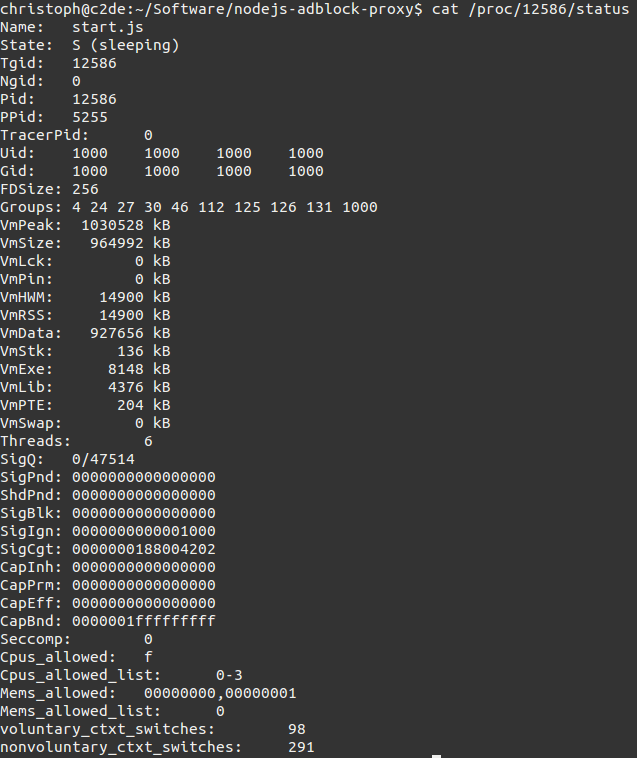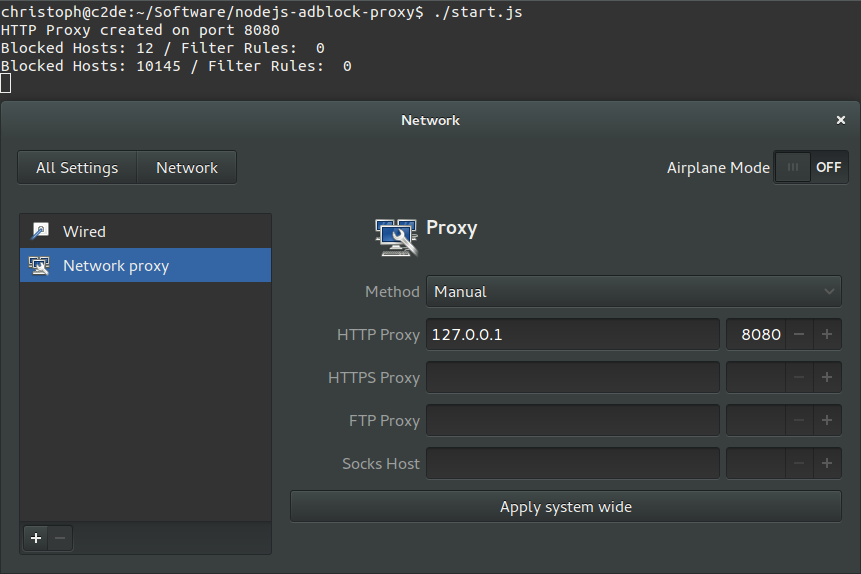NodeJS AdBlock Proxy
NodeJS Proxy for blocking adverts on the interwebz (with support for Adblock Plus filter lists and /etc/hosts files). This project aims to make the interwebz even moar awesome!
Why using a NodeJS based AdBlock Proxy?
-
It's blazing fast. Seriously, forget other Proxy implementations.
-
It's written in JavaScript !!!!111eleven.
-
With a few hours on Facebook, reddit, stackoverflow, it uses this amount of memory (whilst having over 20k blocked hosts and urls with n rulesets):
- And yes, 15MB is way less than a couple GB memory usage of an AdBlock Plus Web Browser extension.
- If you still don't believe it, get over it and use something else. I don't care.
License
This project is released under the WTFPL. See the LICENSE.md for details.
Installation
Note: You can change the suggested installation folder to whereever you want to install it. Just make sure you change the paths in the bash commands accordingly.
-
Download and install the newest available stable release of NodeJS from nodejs.org.
-
Download this project via zip-file and extract its contents to /opt/adproxy.
-
Navigate to the folder in your Shell (or PowerShell) and execute:
cd /opt/adproxy; # change if you used a different folder
nodejs start.js 8080; # will start a proxy on (defaulted) port 8080Features
- HTTP Proxy
- Host config files support (aka /etc/hosts)
- Adblock Plus filter list support ("without element hiding")
- Incremental cache updates for changed files in ./adblockplus.d, ./host.d or ./json.d
Work-in-progress (aka still not working)
- SOCKS5 Proxy
- Asynchronous cache file database for faster restart
- Support for JSON config files
- Support for AdBlock Plus filter rulesets, based on their fucked up RegExp system
Usage
Ubuntu (Gnome Shell)
- Start the Proxy (as shown in Installation)
- Go to System Settings > Network
- Click on Network Proxy on the left side
- Select Method Manual and use 127.0.0.1 as IP and 8080 as port
If you started the Proxy setting a different port, please change that accordingly.
TODO: Other Operating Systems
Documentation about setup on other Operating Systems. Contributions welcomed.

